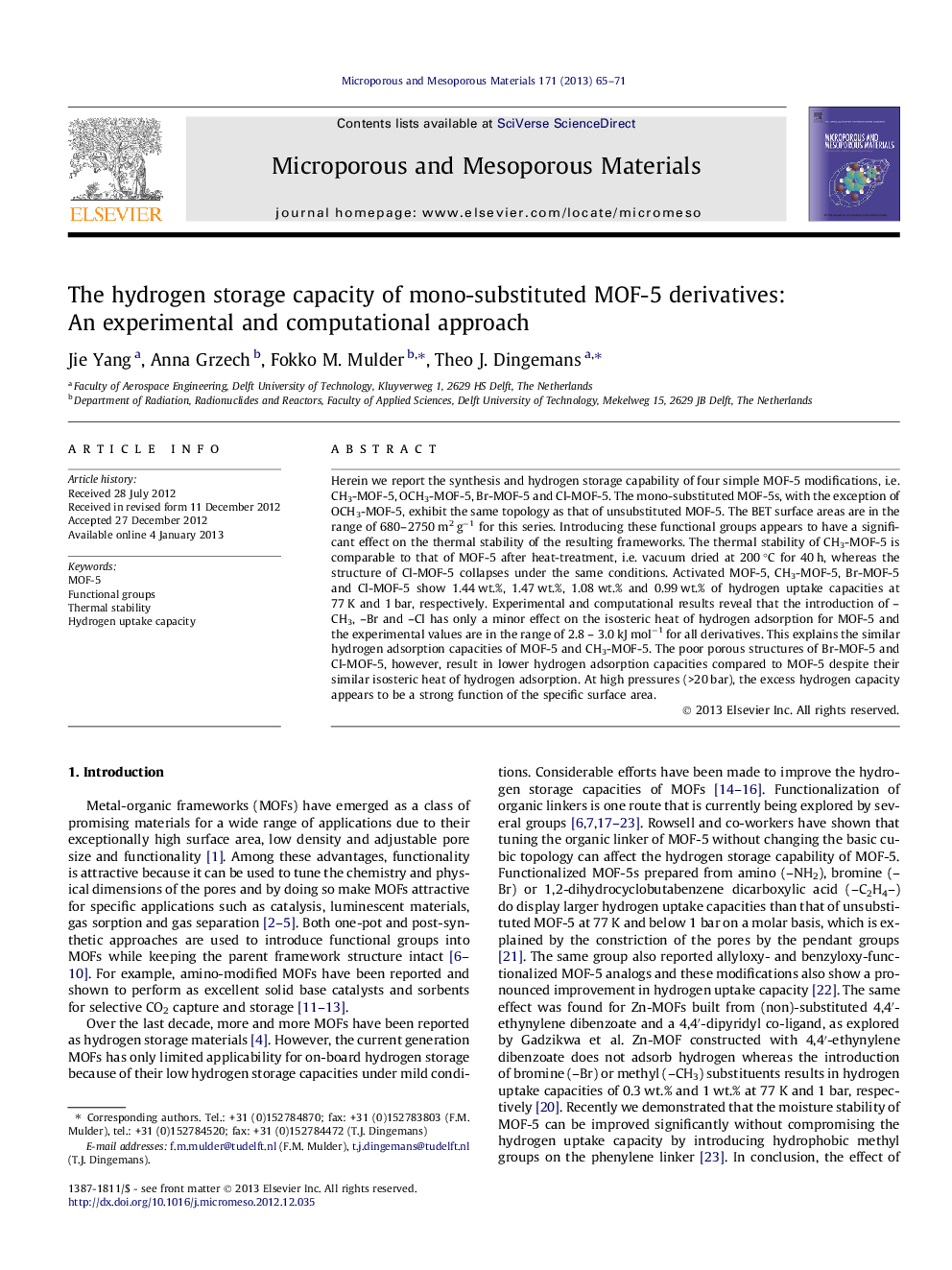| کد مقاله | کد نشریه | سال انتشار | مقاله انگلیسی | نسخه تمام متن |
|---|---|---|---|---|
| 73807 | 49072 | 2013 | 7 صفحه PDF | دانلود رایگان |

Herein we report the synthesis and hydrogen storage capability of four simple MOF-5 modifications, i.e. CH3-MOF-5, OCH3-MOF-5, Br-MOF-5 and Cl-MOF-5. The mono-substituted MOF-5s, with the exception of OCH3-MOF-5, exhibit the same topology as that of unsubstituted MOF-5. The BET surface areas are in the range of 680–2750 m2 g−1 for this series. Introducing these functional groups appears to have a significant effect on the thermal stability of the resulting frameworks. The thermal stability of CH3-MOF-5 is comparable to that of MOF-5 after heat-treatment, i.e. vacuum dried at 200 °C for 40 h, whereas the structure of Cl-MOF-5 collapses under the same conditions. Activated MOF-5, CH3-MOF-5, Br-MOF-5 and Cl-MOF-5 show 1.44 wt.%, 1.47 wt.%, 1.08 wt.% and 0.99 wt.% of hydrogen uptake capacities at 77 K and 1 bar, respectively. Experimental and computational results reveal that the introduction of –CH3, –Br and –Cl has only a minor effect on the isosteric heat of hydrogen adsorption for MOF-5 and the experimental values are in the range of 2.8 – 3.0 kJ mol−1 for all derivatives. This explains the similar hydrogen adsorption capacities of MOF-5 and CH3-MOF-5. The poor porous structures of Br-MOF-5 and Cl-MOF-5, however, result in lower hydrogen adsorption capacities compared to MOF-5 despite their similar isosteric heat of hydrogen adsorption. At high pressures (>20 bar), the excess hydrogen capacity appears to be a strong function of the specific surface area.
Figure optionsDownload as PowerPoint slideHighlights
► The thermal stability of MOF-5 is affected by introducing –CH3, –OCH3, –Br or –Cl.
► The structural characteristics of the modified MOF-5s alter.
► The modified MOF-5s can be successfully activated via a thermal post treatment.
► –CH3, –Br or –Cl has only a minor effect on the enthalpy of H2 adsorption for MOF-5.
► The excess H2 uptake of the modified MOF-5s is a function of specific surface area.
Journal: Microporous and Mesoporous Materials - Volume 171, 1 May 2013, Pages 65–71